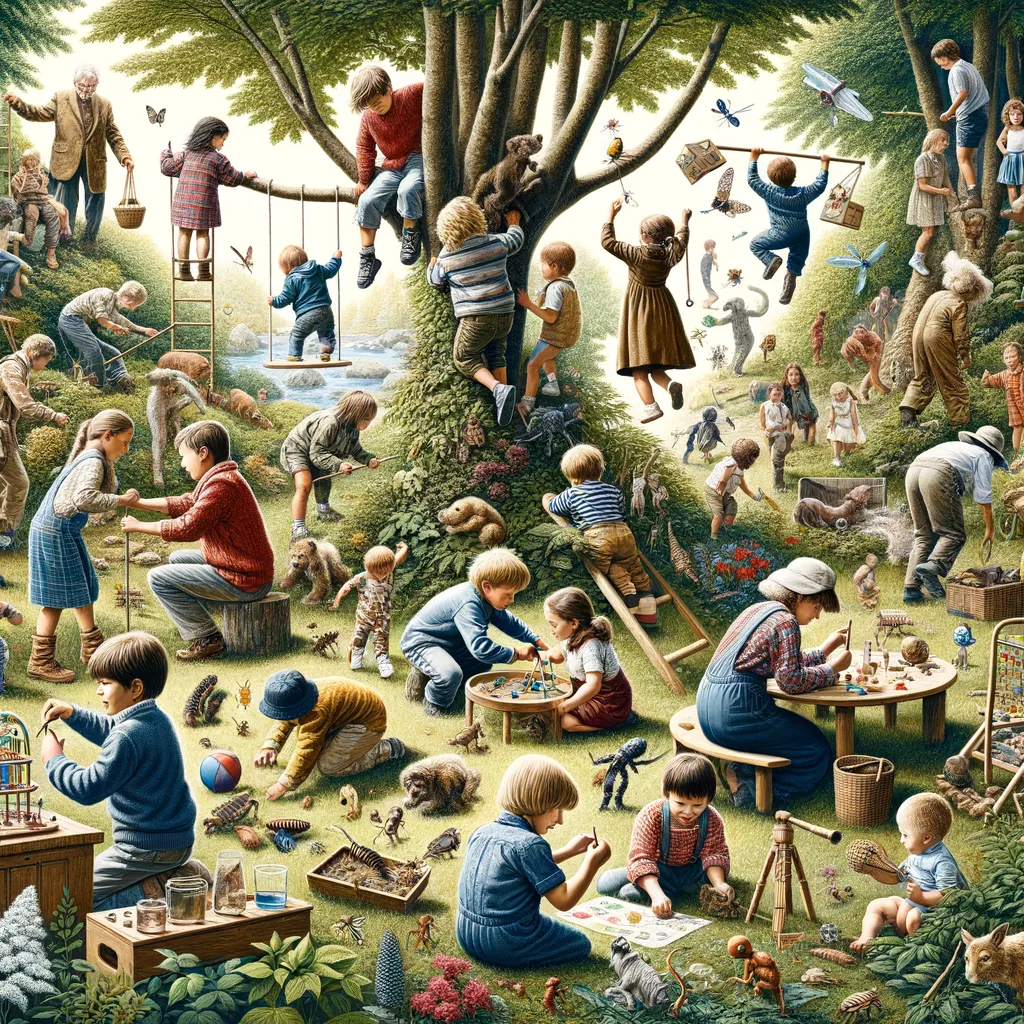Rediscovering Old-Fashioned Play for Children’s Development
In an age dominated by screens and technology, the allure of old-fashioned play is making a compelling comeback, championing the virtues of simplicity, imagination, and physical activity. As parents seek ways to enrich their children’s developmental journey, turning towards the classics – from outdoor explorations to simple yet creative indoor activities – reveals a treasure trove of benefits. In this guide, we dive into the heartwarming world of traditional play, exploring how these timeless activities support physical, emotional, and cognitive development, and how you can seamlessly integrate them into your family’s routine.
Encouraging children to step away from gadgets and embrace the joys of Outdoors play and hands-on activities not only fosters a healthy lifestyle but also nurtures an array of skills. Whether it’s building a fort, playing hopscotch, or engaging in imaginative role-play, old-fashioned play equips children with creativity, problem-solving abilities, and resilience. Moreover, such activities, rich in physical engagement, contribute to better health and well-being, setting a sturdy foundation for lifelong fitness habits. Let’s embark on a journey to rediscover the charm and developmental benefits of traditional play, ensuring our children grow up balanced, happy, and healthy.
Before the digital era, children often spent their hours engaged in play that required nothing more than their imagination and the natural environment. Today, amidst the hustle and bustle of modern life, finding time for Outdoor Activities may seem like a daunting task. Yet, the key to incorporating old-fashioned play lies in its simplicity and accessibility. This guide provides practical tips for parents on how to encourage outdoor play, creative arts, and simple, joyous activities that require minimal resources but offer maximum developmental benefits.
Why Old-Fashioned Play Matters
Old-fashioned play, encompassing everything from outdoor adventures to creative storytelling, holds an invaluable role in child development. Unlike structured activities and digital entertainment, it gives children the freedom to explore, create, and learn at their own pace in a pressure-free environment. This type of play not only strengthens physical health, enhancing coordination and motor skills but also boosts emotional intelligence, helping children to better understand and manage their emotions.
Additionally, engaging in activities that do not rely on technology encourages children to interact with their environment and peers in meaningful ways, cultivating essential social skills such as empathy, cooperation, and communication. Beyond the cognitive and emotional benefits, old-fashioned play instills a sense of independence and confidence in children, empowering them to take initiative and assume leadership roles in group settings.
Embracing the Great Outdoors
One of the most enriching aspects of old-fashioned play is the emphasis on outdoor activities. The great outdoors offers an expansive playground for children to explore, promoting not only physical fitness but also a deep appreciation for nature. Outdoor play encourages curiosity and environmental stewardship, qualities that are increasingly vital in today’s world. From hiking and camping to tree climbing and gardening, outdoor activities provide children with endless opportunities to learn new skills and foster a lasting connection with the natural world.
Rediscovering Old-Fashioned Play for Children’s Development
In today’s tech-saturated society, the simple, unstructured activities that once defined childhood are gaining renewed appreciation for their vast developmental benefits. This resurgence of interest in old-fashioned play highlights its importance in nurturing creativity, physical wellness, and essential life skills. By reintroducing our children to the joys of imaginative and outdoor play, we offer them invaluable opportunities for growth and learning. This guide delves into the timeless virtues of traditional play and provides parents with practical advice for weaving these activities into the fabric of daily life, fostering a healthy, balanced, and joyful upbringing for their young ones.
Encouraging kids to swap screen time for green time or creative crafts doesn’t just open the door to fun; it equips them with critical thinking skills, boosts physical health, and enhances emotional resilience. From the simple joy of running freely in a park to the creative challenge of crafting a homemade toy, the activities often enjoyed by past generations remain powerful tools for development. By exploring how to bring these wholesome experiences back into our children’s lives, this guide aims to help your family rediscover the enchantment of old-fashioned play.
The transition away from digital entertainment to more traditional forms of play may seem challenging in our fast-paced world. However, the essence of old-fashioned fun lies in its simplicity and the natural curiosity it sparks in children. This guide offers you easily implementable steps to integrate enriching outdoor and creative activities into your child’s routine, promising benefits that reach far beyond mere amusement.
Five Things Parents Should Know in Preparing for Rediscovering Old-Fashioned Play
1. The Importance of Unstructured Playtime
Unstructured play, characterized by activities that allow children to lead and make their own rules, is crucial for developing self-reliance, problem-solving abilities, and creativity. It lets children approach tasks imaginatively, helping them learn to think independently and deal with ambiguity. Encourage your child to engage in play without specific goals or guidance, such as building a fort with materials they find around the house or inventing games with friends in the backyard.
2. Creating a Safe and Stimulating Environment
To foster old-fashioned play, it’s vital to create spaces that inspire creativity and exploration. At home, dedicate areas where your child can play freely without concern for making a mess — think designated craft corners or a sandbox in the garden. Safety is also paramount. Ensure the play area is free from hazards and supervise younger children, especially during outdoor activities like climbing trees or riding bikes.
3. The Role of Nature in Child Development
Nature is one of the best playgrounds, offerin vast opportunities for discovery and learning. Outdoor play in natural settings can improve children’s physical health, emotional well-being, and cognitive functioning. Encourage activities like hiking, gardening, or simply observing wildlife together. These experiences not only engage the senses but also instill a sense of wonder and respect for the environment.
4. Balancing Screen Time with Real Time
In the digital age, balancing screen time with real, physical play is more essential than ever. While technology can be a valuable educational tool, excessive screen time is linked to various developmental delays and health concerns. Set clear limits on electronic device use and encourage your child to pursue physical activities and hobbies that require movement and interaction with the physical world.
5. Embracing Boredom as an Opportunity for Creativity
Finally, it’s important for parents to understand that boredom isn’t necessarily negative. Periods of unstructured time challenge children to use their imagination and resources creatively, leading to personal growth and innovation. Instead of immediately turning to digital devices to fill every quiet moment, encourage your child to think of ways to entertain themselves, sparking creativity that benefits their overall development.
By reintroducing our children to the simple joys of old-fashioned play, we open up a world of learning and growth opportunities. These experiences, rich in life lessons and developmental benefits, offer a wholesome balance to the tech-driven entertainment that dominates much of contemporary childhood. Embrace the outdoors, encourage creative expression, and watch your child thrive in ways that only the timeless magic of traditional play can foster.
Disclaimer
The articles available via our website provide general information only and we strongly urge readers to exercise caution and conduct their own thorough research and fact-checking. The information presented should not be taken as absolute truth, and, to the maximum extent permitted by law, we will not be held liable for any inaccuracies or errors in the content. It is essential for individuals to independently verify and validate the information before making any decisions or taking any actions based on the articles.





